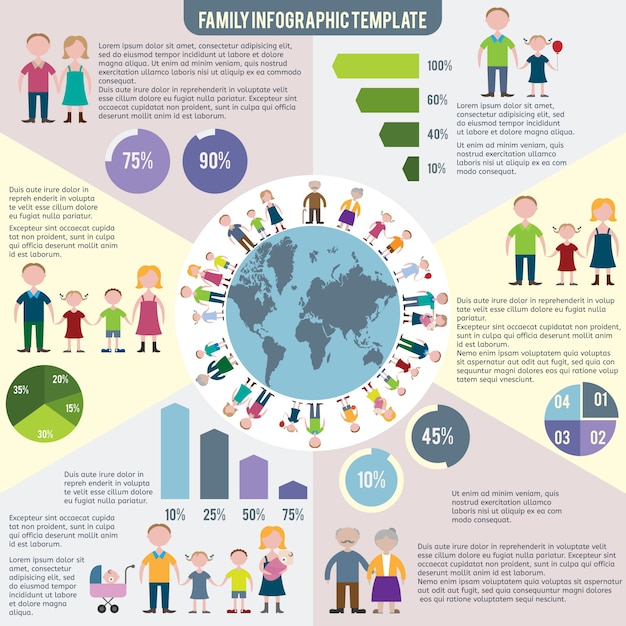Decoding the Data: Newest Trends in American Demographics

Decoding the Data: Understanding the Newest Trends in American Demographics reveals shifts in age, race, and urbanization influencing policy and business strategies across the United States.
The United States is a nation in constant flux, and understanding its demographic shifts is crucial for policymakers, businesses, and individuals alike. Decoding the Data: Understanding the Newest Trends in American Demographics provides an overview of these evolving patterns.
Understanding America’s Age Structure Evolution
The aging of the American population is one of the most significant demographic trends shaping the nation. Let’s delve into how this aging process is transforming society and what challenges and opportunities it presents.
The Graying of America
Life expectancy continues to increase, and birth rates are declining, contributing to an older median age for the U.S. population. This shift has broad implications for healthcare, social security, and the labor force.
Generational Dynamics
Understanding the dynamics between different generations, such as Baby Boomers, Millennials, and Gen Z, is crucial for effective policy-making and resource allocation. Each generation has unique needs and expectations.
- Increased demand for geriatric care services
- Potential strain on Social Security and Medicare
- Changes in housing preferences and living arrangements

As the population ages, there is an increasing need for healthcare professionals specializing in geriatric care. Additionally, governments and communities must adapt to support the needs of older adults, including accessible housing and transportation services.
The Shifting Racial and Ethnic Landscape
The racial and ethnic composition of the U.S. is becoming increasingly diverse. This diversification is reshaping cultural norms, economic structures, and political landscapes. It’s a critical area to understand for anyone doing business in or studying the US.
Growth of Minority Populations
Minority populations, including Hispanic, Asian, and multiracial individuals, are growing at a faster rate than the White population. This trend reflects both higher birth rates and increased immigration.
Impact on Cultural Identity
The diversification of the U.S. is leading to a richer tapestry of cultural traditions, languages, and perspectives. This cultural mosaic is enhancing creativity, innovation, and global competitiveness.
Understanding and celebrating diversity is vital for building inclusive communities and fostering social harmony. Education and awareness programs can help reduce prejudice and promote understanding between different ethnic groups.
Urbanization and Migration: Where Americans Are Moving
Americans are on the move, and understanding these migration patterns is crucial for preparing for the future. The movement of people between states and from rural to urban areas shapes urban development, infrastructure needs, and economic opportunities.
The Rise of Megacities
Metropolitan areas continue to attract large numbers of residents, leading to the growth of megacities like New York, Los Angeles, and Chicago. These urban centers offer diverse job markets, cultural amenities, and educational opportunities.
Local governments and urban planners need to manage population growth effectively by investing in public transportation, affordable housing, and sustainable infrastructure. Creating livable and vibrant cities is crucial for retaining and attracting residents.
- Increased demand for housing and infrastructure in urban areas
- Potential for increased social and economic inequality
- Challenges related to traffic congestion and pollution
Evolving Household Structures
The traditional family structure is evolving, with more diverse living arrangements becoming commonplace. Understanding these changes is critical for policymakers addressing social and economic issues.
Rise of Single-Person Households
The number of single-person households is on the rise, driven by factors such as delayed marriage, increased divorce rates, and longer life expectancies. This trend is reshaping housing markets and consumer spending patterns.
Multi-Generational Living
Multi-generational households, where multiple generations of a family live under one roof, are becoming more common. Economic factors, cultural traditions, and caregiving responsibilities are driving this trend.

Supportive policies and programs that promote flexibility in housing, caregiving, and employment are crucial for supporting diverse family structures. This helps ensure that all families can thrive, regardless of their composition.
Education and Workforce Trends
Education levels and workforce participation rates are key indicators of economic health and social well-being. Understanding education trends is crucial for workforce development.
The Increasing Importance of Higher Education
A college degree or advanced training is becoming increasingly important for securing well-paying jobs in today’s knowledge-based economy. This trend is driving demand for higher education and vocational training programs.
Changing Skills Demands
The skills required for success in the workforce are constantly evolving due to technological advancements and globalization. Adaptability, critical thinking, and technical skills are highly valued by employers.
Investing in education and workforce development programs that align with industry needs is essential for ensuring economic competitiveness. Additionally, promoting lifelong learning and skill development can help workers adapt to changing job markets.
Economic Disparities and Income Inequality
Income inequality and economic disparities continue to be pressing issues in the U.S. Addressing economic disparities requires comprehensive policies that promote equal opportunities and reduce barriers to economic mobility. Understanding how economic factors affect different demographic groups is crucial for creating effective solutions.
The Widening Income Gap
The gap between the rich and the poor continues to widen, leading to social and economic challenges. Factors such as globalization, technological advancements, and changes in labor market dynamics contribute to income inequality.
Impact on Social Mobility
Economic disparities can limit social mobility, making it difficult for individuals from low-income backgrounds to climb the economic ladder. This perpetuates cycles of poverty and inequality.
Policies that promote equal access to education, healthcare, and job opportunities are vital for reducing economic disparities and fostering social mobility. Additionally, strengthening social safety nets and investing in community development can help create pathways to prosperity for all.
American demographics are evolving rapidly, and staying informed about these changes is essential for making sound decisions. From aging populations to shifting racial demographics, these trends have a profound impact on every aspect of life in the United States.
| Key Trend | Brief Description |
|---|---|
| 👵 Aging Population | Increased median age due to longer life expectancy and declining birth rates. |
| 🌈 Diverse Demographics | Growth in Hispanic, Asian, and multiracial populations. |
| 🏙️ Urbanization | Movement of people to metropolitan areas and megacities. |
| 🏠 Evolving Households | Rise in single-person and multi-generational households. |
Frequently Asked Questions
▼
The median age in the United States has been increasing over the years. As of recent estimates, it’s around 38 years old, reflecting an aging population due to longer life expectancies and declining birth rates.
▼
The Hispanic and Asian populations are among the fastest-growing minority groups in the United States. These groups are expanding due to a combination of higher birth rates and continuous immigration from various countries.
▼
Urban areas attract people due to greater job opportunities, cultural amenities, and access to diverse services such as education and healthcare. These factors make cities appealing places to live and work for many individuals and families.
▼
Several factors contribute to the rise of single-person households, including delayed marriage, increased divorce rates, and greater life expectancies. These trends reflect changing social norms and individual preferences in living arrangements.
▼
Income inequality can significantly limit social mobility by restricting access to quality education, healthcare, and job opportunities for low-income individuals. This creates barriers that make it difficult to climb the economic ladder.
Conclusion
Staying informed about these shifts prepares us to address the challenges and leverage the opportunities they bring. The future of the United States depends on understanding, adapting to, and embracing these evolving demographics.
